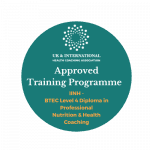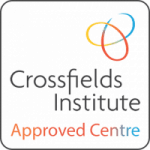In our fast-paced, convenience-driven world, making healthy food choices can be a real challenge. The abundance of food products on the shelves, each adorned with enticing packaging and persuasive marketing claims, can often cloud our judgement when it comes to what we’re actually putting into our bodies. This is where reading food labels plays a pivotal role. It empowers us to make informed decisions, ensuring that we choose foods that align with our health and dietary goals. In this blog post, we’ll explore the importance of reading food labels and how it can serve as a powerful tool for improving your overall well-being.
Ingredient Awareness
Food labels are like a window into the world of ingredients. They tell you precisely what goes into the product you’re considering buying. This knowledge is crucial because it allows you to avoid potential allergens or ingredients that may not be compatible with your dietary preferences. For individuals with allergies or dietary restrictions, reading labels can be a matter of life or death. By scrutinising the list of ingredients, you can keep yourself and your loved ones safe from harmful substances.
Portion Control
Food labels often include information about serving sizes and the number of servings per container. This can be extremely helpful in managing portion control, a key aspect of a healthy diet. Understanding what constitutes a single serving helps you avoid overeating and better regulates your calorie intake. This is particularly important in a society where oversized portions have become the norm.
Nutritional Value
One of the most valuable aspects of food labels is the detailed breakdown of the nutritional content. Here, you can find information on calories, macronutrients – carbohydrates, fats, proteins – as well as fibre, sugar and salt content. This information allows you to assess the nutritional value of a product and make comparisons between different options.
Reading labels also lets you focus on specific nutrients that you may need to limit or increase in your diet. For instance, checking the label for protein content can ensure you are getting an adequate amount either within that product or highlighting the fact you may need to add an extra source of protein to provide a more balanced meal or snack.

Added Sugars and Hidden Ingredients
The prevalence of added sugars and hidden ingredients in ultra processed foods is a growing concern for public health. Food labels help you identify sources of additives and added sugars that might not be obvious when examining the product as a whole.
If you’re trying to reduce your sugar intake, you can check the sugar content in the label (carbohydrates, of which are sugars’) to make a more informed choice.
Being aware of added sugars is essential for managing weight and preventing chronic conditions such as diabetes and heart disease.
Moreover, reading labels can expose hidden ingredients like vegetable oils and artificial additives. These substances can have adverse health effects, and by reading labels, you can steer clear of them.
Make Informed Choices
Ultimately, the goal of reading food labels is to empower you to make informed decisions about what you eat. Armed with this knowledge, you can choose foods that align with your health goals, whether you’re looking to lose weight, manage a medical condition, or simply make better dietary choices by reducing ultra processed foods.
Reading food labels is not just a smart choice; it’s an essential skill for anyone who wants to lead a healthier life. It enables you to take control of your diet, avoid harmful substances, and make informed choices about what you consume. So, the next time you’re in the grocery store, take a moment to read the labels on the products you’re considering and compare them with other similar products that might provide a better choice.
To learn more about reading food labels, read out Reading Food Labels 101 blog post.











